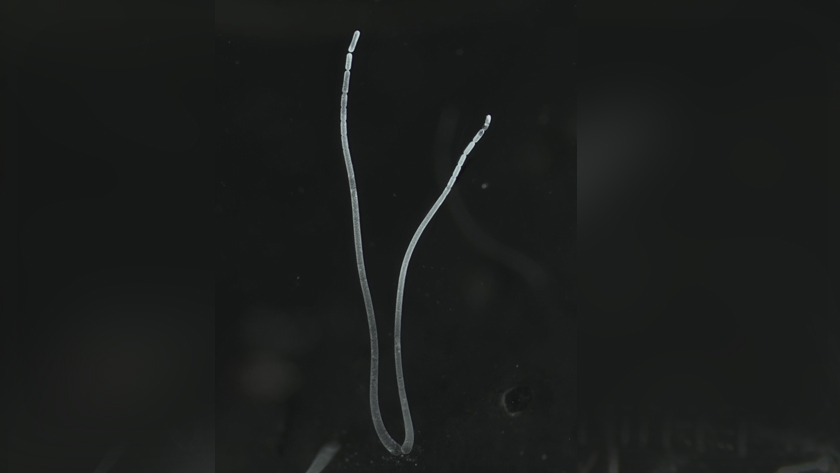Iran Press/ Sci & Tech: Clinging to sunken debris in shallow, marine mangrove forests in the French Caribbean, tiny thread-like organisms—perfectly visible to the naked eye—have earned the title of the largest bacteria ever known.
Measuring around a centimeter long, they are roughly the size and shape of a human eyelash, batting away the competition at 5,000 times the size of garden-variety bacteria and 50 times the size of bacteria previously considered giant. In human terms, this is akin to coming across a person as tall as Mount Everest, Ars Technica reported.

Olivier Gros, a biologist at the University of the Antilles, discovered the prokaryotes in 2009, noticing them gently swaying in the sulfur-rich waters among the mangroves in the Guadeloupe archipelago. The bacteria clung to the leaves, branches, oyster shells, and bottles that sunk into the tropical swamp, Gros said in a press briefing.
He and colleagues first thought they might be complex eukaryotic organisms or perhaps a string of linked organisms. But years of genetic and molecular research revealed that each string is, in fact, one towering bacterial cell, genetically related to other sulfur-oxidizing bacteria. "Of course, this was quite a surprise," Jean-Marie Volland, a microbiologist at the Joint Genome Institute in Berkeley, California, said in the briefing.
This week, Gros and colleagues published an article in Science laying out everything they've learned about the new, enormous bacteria, which they've dubbed Candidatus (Ca.) Thiomargarita magnifica.
214
Read More:
Lake Urmia; biggest lake in West Asia turns blood red
New fossils reveal largest land mammal
Mojtaba Darabi

